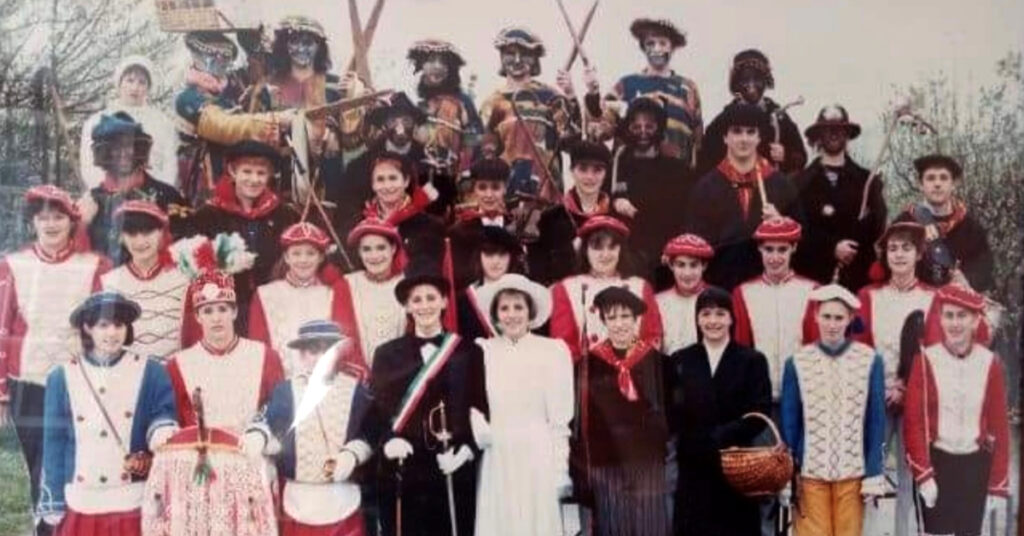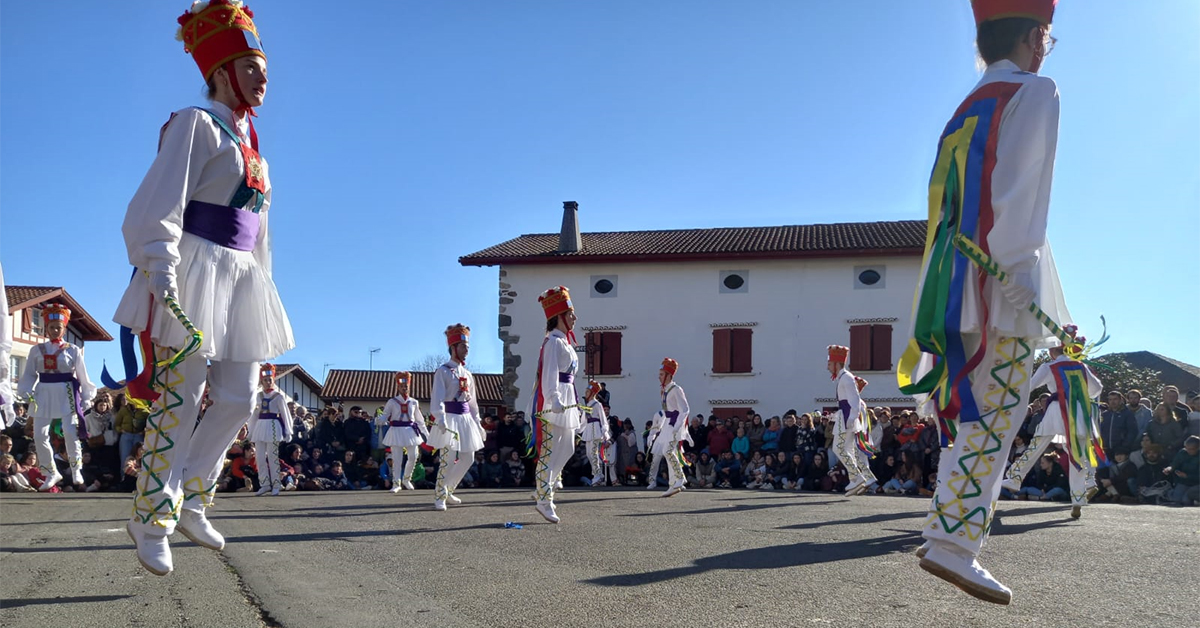Archives
Masquerades are the traditional carnivals of the Soule region or Zuberoa as it is known in Basque. Society is divided into two groups in the masquerades. On the one hand, the reds, who represent the good, honourable and formal society. They include the five main characters: the lord and the lady, the peasant man and woman, and the marshals. On the other hand, there are the unscrupulous, unkempt and dirty blacks. That group includes the gypsies, who have been settled in Zuberoa since time immemorial, even though society would continue to harbour prejudices for ages. There are also the characters depicting trades of old: swords sharpeners, horse gelders, or the boilermakers who repaired leaky boilers. In addition to reflecting society, the masquerade aims to be satirical and criticise it.
The Zuberoa masquerades, the cowbells (Joaldunak) of Ituren and Zubieta, the Lantz carnival… are well-known. That is not the case of Santibate (cowbell ringing) and Libertimendua, at least not outside Iparralde (the part of the Basque Country coming under France). There are two essential aspects to this carnival in Baja Navarra: Santibate’s night – the festivity of Zirtzilak (vagabonds) – and Libertimendua Day – the festivity of the Bolantes (courtship dancers) –. Young people go from house to house or from bar to bar in Santibate and spend the night singing or improvising bertsos (Basque improvised verse). Today’s article focuses on Libertimendua Day and we will leave Santibate for another occasion.
This festivity was reintroduced in the Garazi area by Antton Luku and was then brought to Donapaleu by Mattin Irigoien. It later spread to the Hergarai and Aldude valleys. It then crossed the border into Labourd and began to be celebrated in Makea, Lekorne, and the Luhuso area. And finally, the young people of Hazparne also began to celebrate it three or four years ago.





